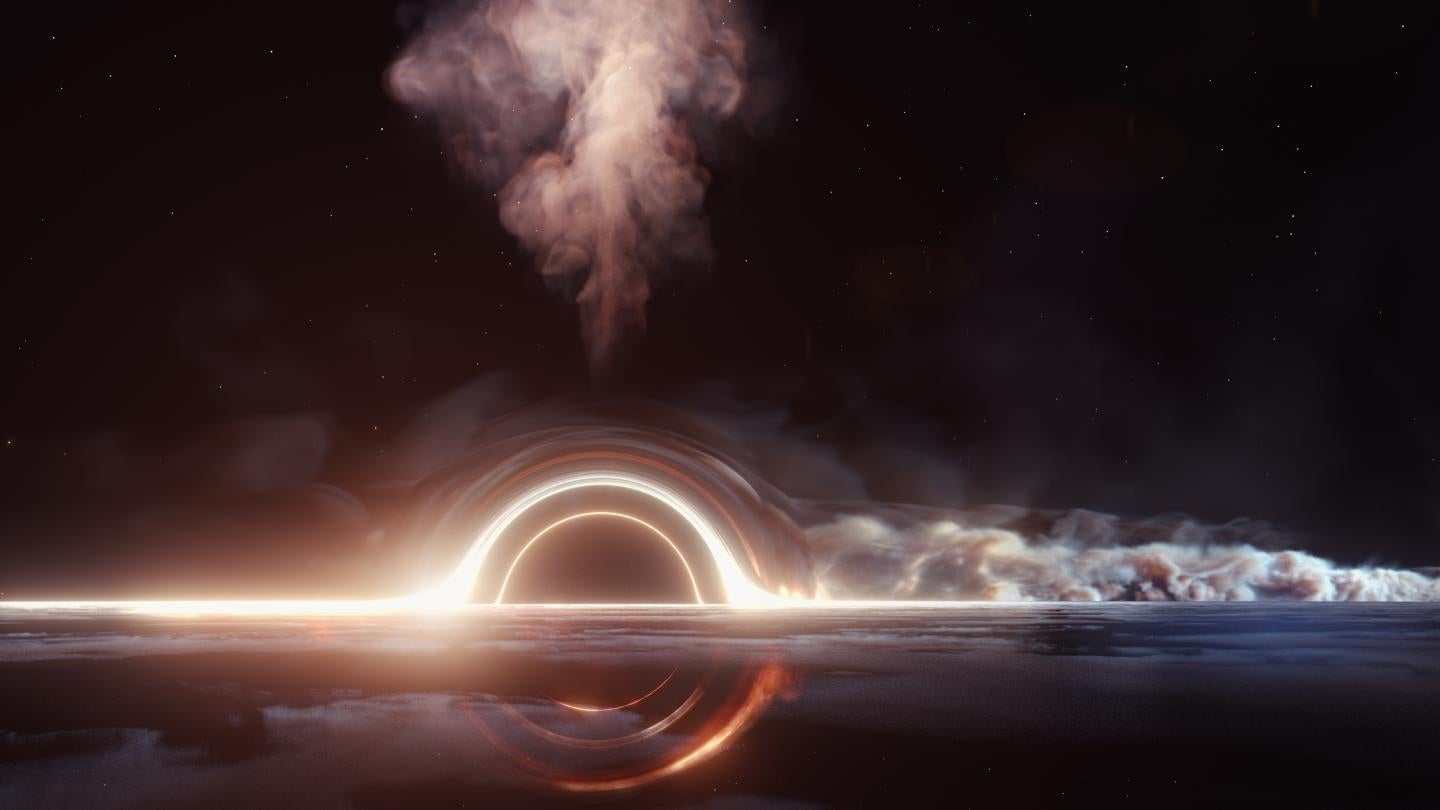Incredibly energetic ‘ghost’ particles spotted coming from shredded star in major breakthrough

Scientists have traced a “ghost” particle back to a shredded star – and found not just a “cosmic particle accelerator” but also a possible explanation for the highest energy particles in the universe.
The researchers watched as a high-energy neutrino travelled over a period of 700 million years, being shot out across the cosmos when a star was torn to shreds by a black hole. That black hole is as massive as 30 million suns, and its gravity is so intense that it tears stars to pieces.
“The force of gravity gets stronger and stronger, the closer you get to something. That means the black hole’s gravity pulls the star’s near side more strongly than the star’s far side, leading to a stretching effect,” said Robert Stein, a scientists at the Deutsches Elektronen-Synchrotron particle accelerator research centre.
“This difference is called a tidal force, and as the star gets closer, this stretching becomes more extreme. Eventually it rips the star apart, and then we call it a tidal disruption event. It’s the same process that leads to ocean tides on Earth, but luckily for us the moon doesn’t pull hard enough to shred the Earth.”
Half of the debris from the collision was sent flying into space. But the other half stayed on a disc around the black hole, circling like water around a drain – as it does, it starts to get hot and glow.
That glow was spotted from Earth in April 2019, at the Zwicky Transient Facility in California. In October, the IceCube neutrino detector at the South Pole detected an extremely energetic neutrino – smashing into the antarctic ice with at least 10 times the energy of any particle accelerator on Earth – that came from the same tidal disruption event.
Because scientists were able to capture the event through a variety of different telescopes – looking at the radio, optical and ultraviolet evidence of the shredding – they were able to gather much more detail about it than they would otherwise. This “multi messenger” astronomy allows for much greater understanding about events happening in space.
It is the first particle that can be traced back to such a “tidal disruption event” or TDE and suggests that scientists are right to think that the shredding of a star can also work as a natural particle accelerator.
It is also some of the earliest evidence of black holes destroying stars in one of those TDEs, and could allow scientists to finally establish whether they are responsible for ultrahigh energy cosmic rays, or UECRs, the most energetic particles in the universe.
Such neutrinos are especially elusive, since they are not simply hard to track back to their source but usually difficult to see. As such, the discovery by scientists of the neutrinos, their source, as well as the potential discovery of the source of the UECRs.
“The origin of cosmic high-energy neutrinos is unknown, primarily because they are notoriously hard to pin down,” said Sjoert van Velzen, one of the paper’s lead authors, in a statement. “This result would be only the second time high-energy neutrinos have been traced back to their source.”
The findings were the result of work undertaken by researchers from more than two dozen institutions and are published in the journal Nature Astronomy today.
While the detection of the high-energy neutrino and the ability to trace it back to its source was rare and special, it may soon become less so. Scientists hope that new equipment will allow it to become a more regular occurrence.
“We might only be seeing the tip of the iceberg here. In the future, we expect to find many more associations between high-energy neutrinos and their sources,” says Francis Halzen, Professor at the University of Wisconsin-Madison and Principal Investigator of IceCube, who was not directly involved in the study, in a statement.
“There is a new generation of telescopes being built that will provide greater sensitivity to TDEs and other prospective neutrino sources. Even more essential is the planned extension of the IceCube neutrino detector, that would increase the number of cosmic neutrino detections at least tenfold.”

Join our commenting forum
Join thought-provoking conversations, follow other Independent readers and see their replies
Comments